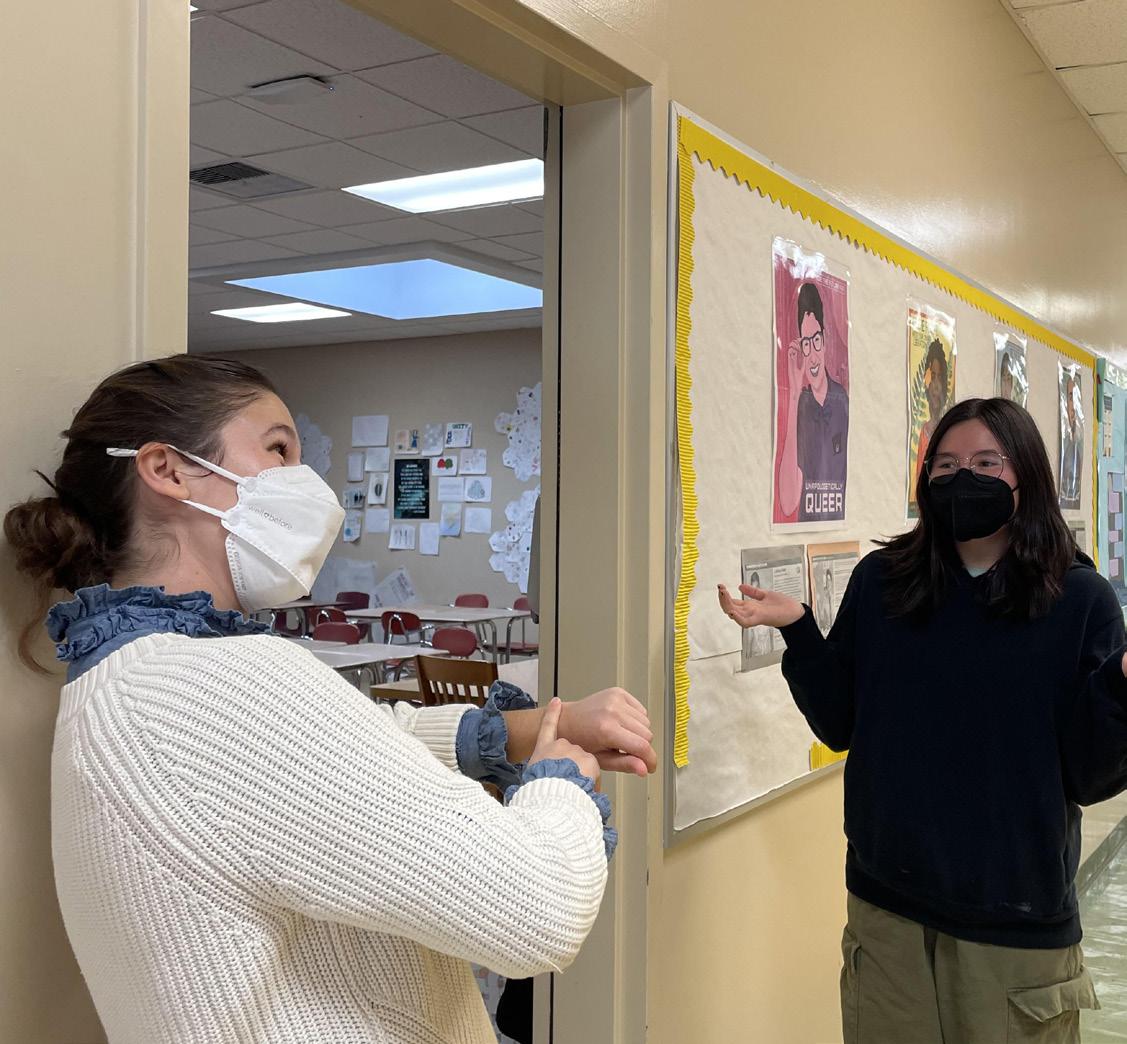
5 minute read
SPORTS Student Success in Non-School Sports
Julia Xia, Sta Writer
The sports section of the Mills newspaper focuses exclusively on the sports played at school. While this is to be expected, the fact is that many students play sports outside of school, yet they don’t get any coverage. Students who play other sports outside of school are often overlooked or even forgotten. It’s essential to showcase the talented players at Mills. Sports such as dance and gymnastics are just as important as basketball, although they aren’t discussed as often. The students who participate in activities outside of school deserve to have their hard work recognized.
Advertisement
Ari Sanchez (12) is the President of LMP Ballet Folklórico, a type of dance created in 1954 that celebrates Mexican culture through its dances, outfts, and music. Ballet Folklórico requires the dancer to concentrate mainly on their leg and arm movements. Moving their arms to the music while maintaining a smile on their faces takes a lot of time to perfect. Sanchez started when she was a freshman, but due to Covid-19, she couldn’t perform until her Junior year. Now she is a Senior and leads her teammates in a supportive and caring manner. “The dancers never put each other down, and it’s a very welcoming environment, especially to someone who hasn’t been there long.”
Michaela Gonzalez (11) is also a dancer. She is a member of the LMP Dance Program and a tap, jazz, and ballet dancer. She began dancing when she was fve and quickly fell in love with it. “When all my friends began to quit ballet, I realized that I really loved it and how my body likes to move.” She dances to express herself in a way that makes her happy. Gonzalez believes that everyone should be able to have a creative outlet that lets them express themselves. While many sports focus more on the game rather than the training, dance is centered around training, and the time it takes to perfect everything for the audience. “Ballet is a very beautiful art form that focuses on the person because the person is the art.”
Another sport many students participate in outside of school is gymnastics. One student, in particular, has been doing gymnastics for years. Theresa Bruce (10) is known for her talent in gymnastics, having been at the competitive level for fve years. She started doing gymnastics ten years ago to get stronger both physically and mentally. Learning gymnastics takes time and dedication since the athlete has to learn many complicated moves and perform them in a minute without fail. With the minimum practice time being four hours a day, fve days a week, the sport is not for the faint of heart. “It also gives you perseverance to not give up on things easily, which applies to daily life.”
While it is natural to give preference to students who play sports at school, we can’t forget that many students pursue many different sports outside of school. It is important to represent all the students and all of the activities that they participate in; these students deserve the same amount of attention and praise as other students.
The Toxic E ects of Gym Culture
Nicole Lee, Sta Writer
The new year is upon us, and with that means new year’s resolutions. The most common among them being getting into shape. As more people purchase gym memberships and gyms become increasingly crowded, people look to social media for inspiration. Apps such as Instagram and Tik Tok have fueled a surge of bodybuilding and weight lifting that has infuenced both men and women to participate in. On Tik Tok, gym related videos have accumulated billions of views, since the short videos allow people instant access to tips and tricks when working out. The gym community has grown fast in recent years due to social media’s infuential effects. However, as unhealthy health fads join the mix, the ftness world has created a toxic gym culture.
On social media, it is easy to photoshop curves and muscles onto oneself which advertise fake workout methods. This could include unrealistic workout routines, false health advice, and unsafe diets that are causing many to rethink joining the ftness community. Instagram models faunt their perfect hourglass fgure with small hips and a round butt, when in reality many have been exposed to having body altering surgeries. With most of the adolescent population on these platforms, it is unhealthy and damaging to their body image. It is reported that over half of all children experience body-dissatisfaction and body dysmorphia. With the infux of unrealistic body standards it is likely these statistics will increase.
The changes within a person takes months to see, so many should be celebrated on their journey. But in reality, many just continue to compare themselves to other infuencers. Aiden Adeva (12), an avid gym goer, described how he would constantly compare himself to other people, especially when it came to their progress. He continued his statement saying, “I admit it’s hard not to make comparisons, but people need to discover their own bodies and fgure out what is right to achieve your own goals.” What many fail to realize is that not everyone’s body is alike, and not all routines will have the same effects. Everyone’s body metabolizes differently and gains muscle at a different rate. Instead of taking one’s time, some instantly rely on eating disorders and even go as far as to taking steroids or harsh supplements, which will only the body. Certain performance enhancing drugs can cause hair loss, acne, mood swings, liver damage, and even cancer. The effects of taking drugs are not worth it, nor is starving yourself to reach a limited amount of calories. Working out is supposed to promote healthy bodies and brains, but toxic gym culture does quite the opposite.
Toxic gym culture can also change the reason many choose to workout in the frst place. It is common for people to want to become healthier for the new year, hence the phrase, “New year, new me.” However, people take this too seriously when they strive for the “perfect body.” People tend to become competitive rather than focusing on one’s health and use the gym as a way to compare their appearance to others. Many who are trying to get into ftness commonly complain that gyms are overwhelming and scary, as many newcomers feel they are being looked down upon. Tiffany Huang (12), Mills’ASB Climate and Culture Commissioner, shed light on the struggles she faced in the beginning of her gym journey. “I was putting myself out there and stepping out of my comfort zone in a public gym flled predominantly with older men.” She went on to explain how bigger, more muscular men would watch and critique her form and how she felt like she was being sized up everytime she stepped foot into her local gym. Eventually, with exposure from her peers, Huang was able to create a routine that was right for her and embrace being a part of the minority of women at the gym. However, she hopes others can feel supported and comfortable rather than intimidated when starting their own ftness journey.
Gym culture perpetuates the idea that going to the gym requires one to look the part, meaning you must already be in shape. This can really hurt people as it focuses on their insecurities and creates a discriminatory environment. The gym should be a space for everyone to focus on self-improvement in a healthy way. Social media can be a great tool to learn and experiment with new techniques, but when it becomes a method for body shaming, it becomes extremely damaging.









